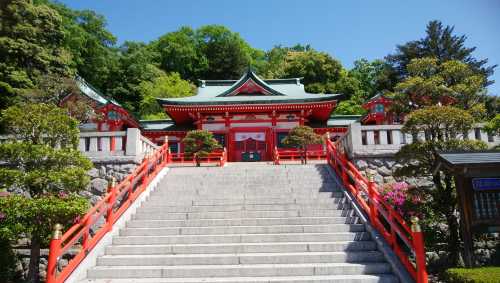App
Customer Support
Find Bookings
Popular Trip Moments
Feel the healing power of flowers! Seasonal flower fields ͛💠 What are the famous tourist spots? | Spectacular flower garden near Tokyo | Recognized as a Japanese Heritage Site! | Nasu Highlands: 2 recommended spots | Breathtaking Beauty of the Miracle Wisteria | CHILLING WITH COLOURFUL BLOOMS ALL AROUND - CAN'T COMPLAIN | Ashikaga Flower Park, a paradise of flowers and light, illuminates the wisteria in full bloom! | WALK THE PATH WHERE WISHES COME TRUE | Ashikaga Flower Park🌼A relaxing spot where you can enjoy spectacular views throughout the seasons🪻💐 | Tochigi Prefecture Tourist Attractions | 【Ashikaga Flower Park】What an experience! Truly moving. | [Ashikaga] Enjoy wisteria in full bloom | Let's go here during Golden Week! Flower Fields [Tochigi] | Let's go here during Golden Week! Shrine tour [Tochigi] | Let's go here during Golden Week! Ashikaga Tour [Tochigi] | Let's go here during Golden Week! Customized ice cream [Tochigi] | The "Wisteria Story ~ Great Wisteria Festival" blooms at Ashikaga Flower Park | Ashikaga Flower Park was amazing!! | [Spring in Tochigi ②] Ashikaga Flower Park and nearby spots you should visit🚶♀️ | [Spring in Tochigi] Amazing! Ashikaga Flower Park 💐 | [Tochigi x Ashikaga] Enjoy lunch while looking at the vineyards at a winery | [Tochigi] Not only the wisteria flowers, but also the irises and hydrangeas are beautiful | WHEN CHERRY BLOSSOMS FALL, NEW WONDERS BLOOM | Tokyo's Hidden Cherry Blossom Spot – Full Bloom at Ashikaga Heisei Park! 🌸 | 2025 Japanese Wisteria Guide | The 160-Year-Old "Miracle Wisteria" at Ashikaga Flower Park | [Tochigi] A spectacular wisteria viewing spot that everyone wants to see at least once in their life | [Drowning in wisteria] Ashikaga Flower Park 🪻 | 🛕 Head to Tochigi Prefecture, a relaxing destination that combines history, nature and hot springs! | The wisteria festival at Ashikaga Flower Park is a spectacular sight
Recommended Attractions at Popular Destinations
Popular Attractions in Bangkok | Popular Attractions in Manila | Popular Attractions in Tokyo | Popular Attractions in Taipei | Popular Attractions in Hong Kong | Popular Attractions in Seoul | Popular Attractions in Kuala Lumpur | Popular Attractions in Los Angeles | Popular Attractions in Shanghai | Popular Attractions in New York | Popular Attractions in Shenzhen | Popular Attractions in Osaka | Popular Attractions in Singapore | Popular Attractions in London | Popular Attractions in Guangzhou | Popular Attractions in San Francisco | Popular Attractions in Beijing | Popular Attractions in Macau | Popular Attractions in Bali | Popular Attractions in Jakarta | Popular Attractions in Paris | Popular Attractions in Ho Chi Minh City | Popular Attractions in Istanbul | Popular Attractions in Phuket | Popular Attractions in Chicago | Popular Attractions in Seattle | Popular Attractions in Toronto | Popular Attractions in Orlando | Popular Attractions in Cebu | Popular Attractions in Chiang Mai
Popular Restaurants in Ashikaga
Meijian | Aonodokutsu | Naporinoshokutaku | Poruka | Yamaokaya Ashikaga | Marukingyoza | Taiho | Hanamarudon | Gingama | Torii Branch Store | Mocha Coffee | Jubeezushi | Ashikagaimari | Tonkatsu Sakae | Barley Shop Roa Factory Direct Sales | Market 112 | Unagi Kanebako | Ginmaru | Yakisoba Houseozeki | Hatoyaokonomiyaki | Restaurant Yuri Asamada Honten | Amarienborn | Seafood Tavern Sakura | Kyoyuan | House Roast Coffee Shop Kanoka | Akemizushi | Okada no Panju | Maruyama | Sakanaya Tsuki to Usagi | Ashibe
Popular Ranked Lists
Top 50 Must-Visit Restaurants in Changsha | Top 20 Luxury Hotels near Palghar | Top 50 Luxury Hotels near Province of Huelva | Popular Best Things to Do in Xinxiang | Top 10 Best Things to Do in Qujing | Top 50 Must-Visit Restaurants in Vancouver | Popular Best Things to Do in Tongling | Top 50 Must-Visit Restaurants in Barcelona | Top 10 Best Things to Do in Xilingol League | Top 10 Best Things to Do in Daxing'anling | Popular Best Things to Do in Bozhou | Top 10 Best Things to Do in Benxi | Popular Luxury Hotels Near Pitesti | Top 10 Best Things to Do in Huludao | Top 50 Must-Visit Restaurants in Seoul | Top 50 Must-Visit Restaurants in San Francisco | Top 10 Best Things to Do in Chifeng | Top 10 Best Things to Do in Gannan | Top 50 Must-Visit Restaurants in Rome | Top 50 Must-Visit Restaurants in George Town | Top 20 Luxury Hotels near Rutherford | Top 50 Must-Visit Restaurants in Nha Trang | Popular Luxury Hotels in Mayen-Koblenz | Popular Best Things to Do in Zhijiang | Top 50 Must-Visit Restaurants in Sydney | Popular Best Things to Do in Wuzhishan | Top 10 Luxury Hotels near Calasiao | Top 10 Best Things to Do in Jiangmen | Top 50 Must-Visit Restaurants in Washington D.C. | Popular Luxury Hotels Near Bungokho
About
Payment Methods
Our Partners
Copyright © 2025 Trip.com Travel Singapore Pte. Ltd. All rights reserved
Site Operator: Trip.com Travel Singapore Pte. Ltd.
Site Operator: Trip.com Travel Singapore Pte. Ltd.























